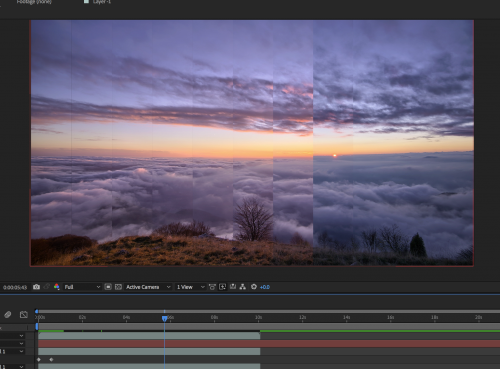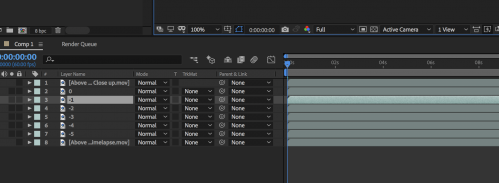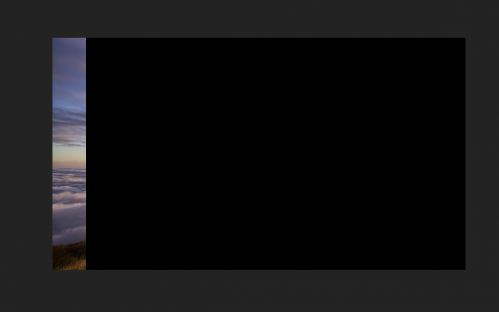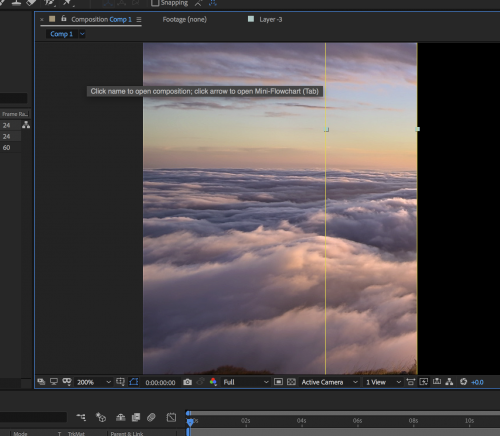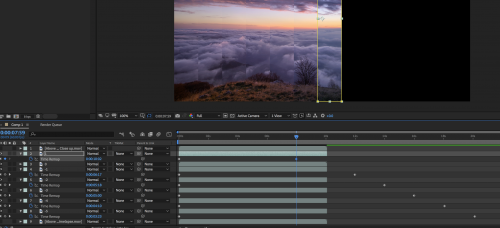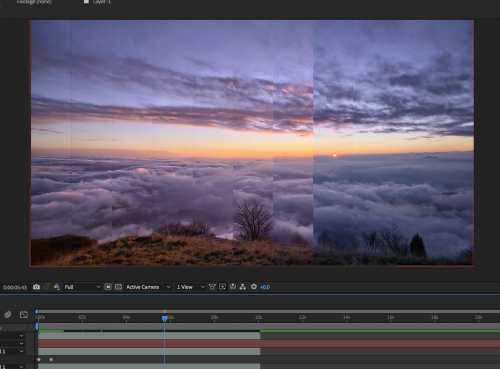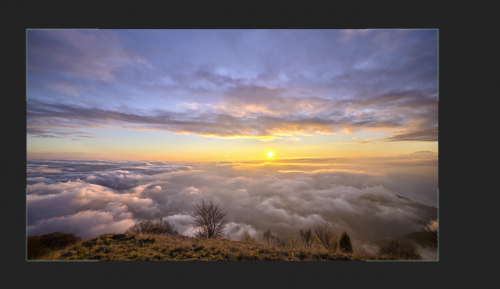THEME: Time as Material
CONTEXT:
The Shortest Day at the Van Abbemuseum - Jan Dibbets (1970) : https://vanabbemuseum.nl/en/collection/details/collection/?lookup%5B1673%5D%5Bfilter%5D%5B0%5D=id%3AC860
Nathan Swiming Los Angeles - David Hockney (1982) : https://curiator.com/art/david-hockney/nathan-swimming-los-angeles
We were shown these two photography works during class, and I found it fascinating how static images could create an illusion of passing time. I also wondered about how its visuals would be if the images were moving.
As we discussed both captured time (real-time) and fictive time (authored), I thought about combining these concepts for a video, inspired by the fragmentation or compartmentalization of time in Dibbets, and Hockney's work.
METHOD: To use video footage and use After Effect's time remapping to both organize and disorganize the concept of time within a single frame or shot.
RESPONSE: A timelapse video of a sunset (captured time), fragmented by varying its playback speed (authored time), that intends to evoke simultaneous emotions of relaxation and discomfort.
REFLECTION:
I chose to use stock footage of a timelapse just to play around with the idea of fragmenting time within a single frame. I may want to explore this idea in the future, with video that I capture myself given the proper equipment for a timelapse. A timelapse was the most appropriate footage I thought for this piece, as they are in essence captured long duration time compressed within a few seconds. Timelapses are also a good example of combining authored time, and captured time. Slowing down and speeding up a timelapse footage would also create the most movement within each fragment, as well as further elevating the abstraction of captured time. I would want to explore this treatment in future work, as it may also be effective using a simple looping animation. This could also result ininteresting visual effects, or to explore heirarchy of information in a time-based moving work.
I would also like to add that my first attempt in engaging with time as material, wasn't fruitful. I initially intended to explore varying time, in a work that explores why big creatures or giants in movies or videogames move as if they are moving in slow motion. Where in fact, they should be moving about the same speed as everyone or everything else on the ground.
In this link is my test if this is actually true, even in a controlled 3D environment: https://www.youtube.com/watch?v=5d18PBzhfQw. As seen in the video it was not, and I found out in various science wikis and forums that this effect is simply movie magic, to enhance the feeling of how enormous a giant creature like Godzilla is. I do however, would be interested to subvert the slow moving giants effect, in future work that could have terryfying and fast moving giants who are not following how movie audiences normally percieve them to be.
FOOTAGE: Royalty free footage from Evanto Elements: https://elements.envato.com/sunset-above-clouds-timelapse-8PWAJ9B
About This Work
By Carlo Tolentino
Email Carlo Tolentino
Published On: 01/05/2019
